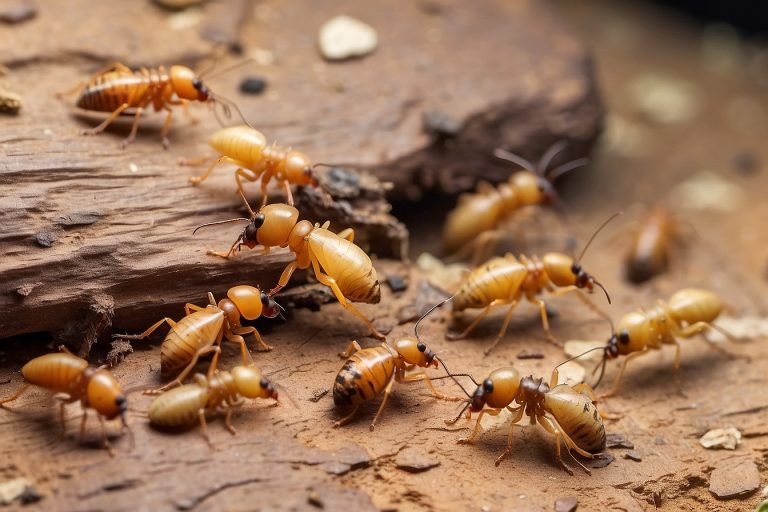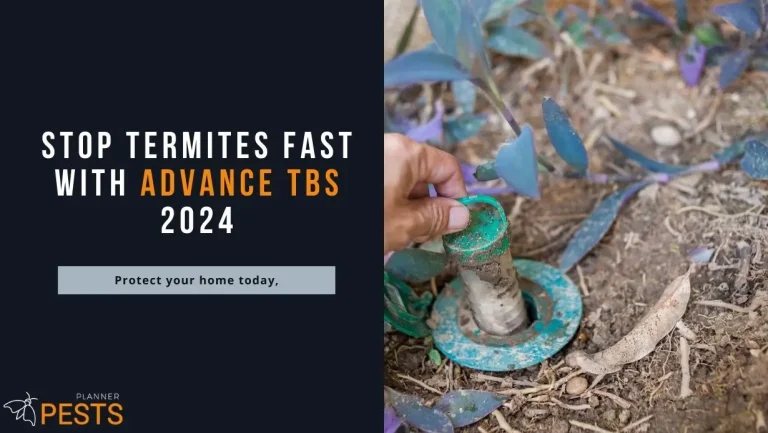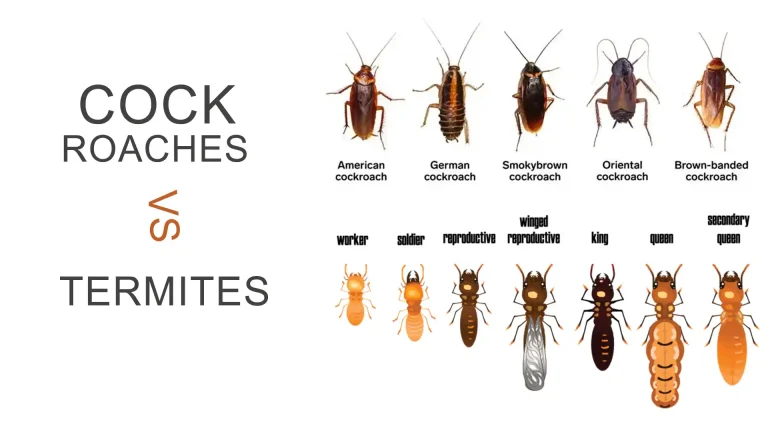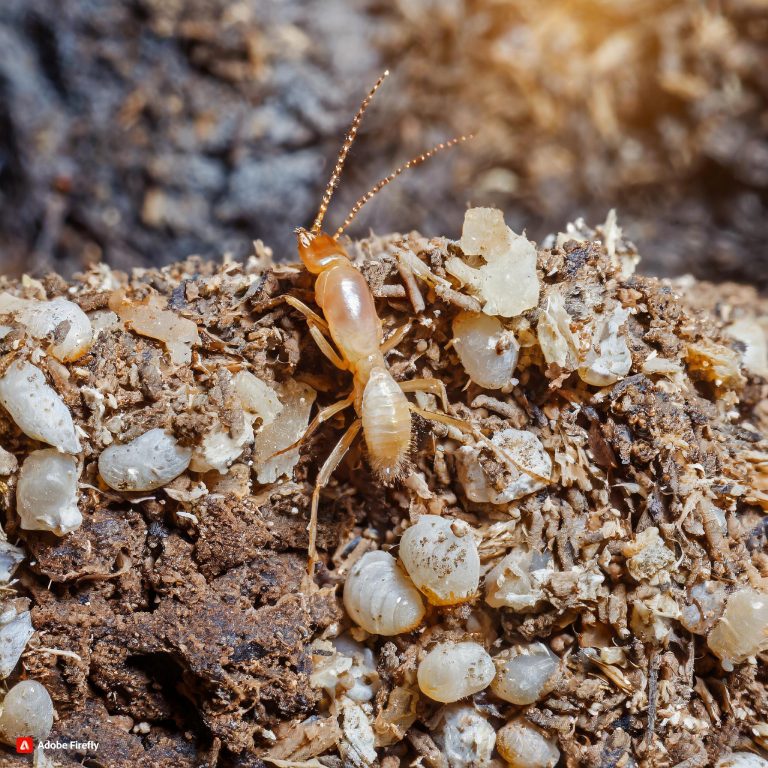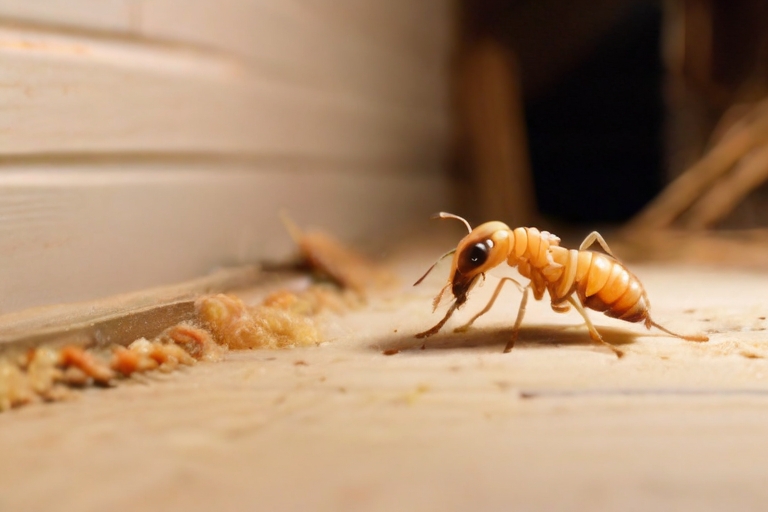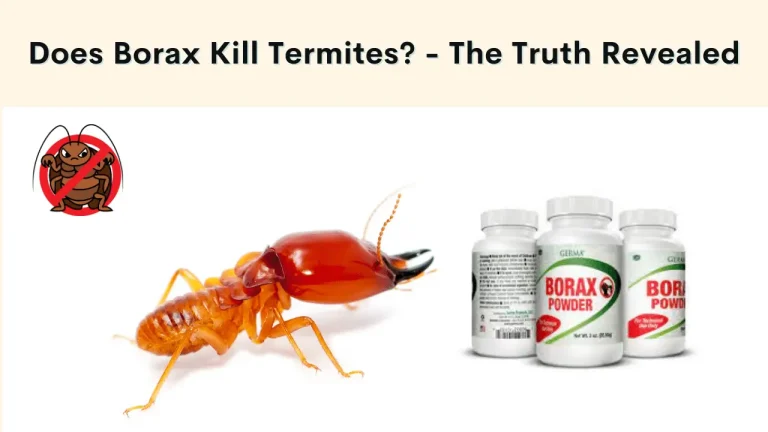White ants vs termites Identification and Behavior: What’s the Difference?
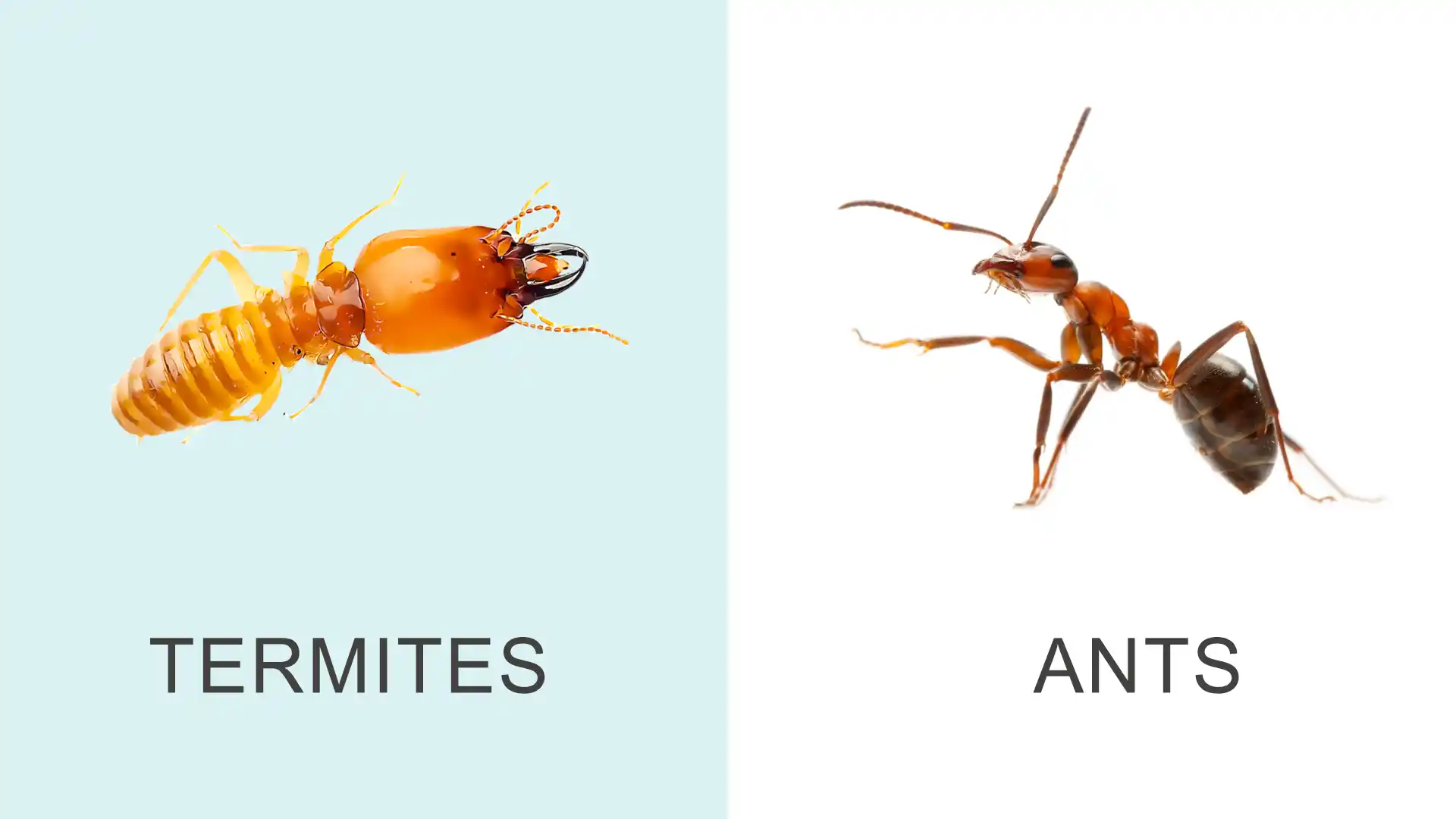
Homeowners don’t like finding wood damage, tunnels, or bug swarms in their houses. But before you call pest control, make sure what you have white ants or termites. While often mixed up, ants and termites look and act differently, which changes how to remove them.
We’ll explain details about their bodies and wings, where they live and eat, and other key points to tell these major pests apart. Read on to become an antennae expert spotting white ants vs termites!
White Ants vs Termites: Physical Differences
The first step in pest identification involves careful visual inspection. Compare key physical characteristics on specimen bodies and wings to determine if you have ants or termites:
Body Shape and Segmenting
- Termites have straight waists with more consistent width across their rectangular-shaped bodies. They appear somewhat beadlike.
- Ants have clearly pinched waists connecting a widened abdomen to the narrower thorax and head. Their segmentation gives an hourglass appearance.
Wings
- Termite front and hind set of wings are nearly equal in size and length. Their wings lay flat and straight over their body when at rest.
- Ants have much smaller hind wings compared to the front set, which can’t fully cover their abdomen. Their wings aren’t as wide or uniformly flat.
Color
- Termites usually have a creamier whitish body coloration with almost transparent wings. Workers appear pale yellow to white.
- Ants commonly boast richer brown, black, or reddish hues on their exteriors. Wings when present take on darkened tints.
Antennae and Eyes
Perhaps the most instantly distinguishing features are ant and termite heads.
- Termites have straight antennae with no bend or elbowing. Their heads host smaller eyes.
- Ants uniformly have sharply elbowed antennae, an instant giveaway! Their larger, more prominent eyes also separate them out.
Once you train your eye, it becomes easy to differentiate between winged termites vs swarming ants based on more than wings alone. But physiology offers more clues…
Signs of Infestations: Home Damage and Droppings
Beyond direct sightings, pest professionals can deduce likely termite or ant infestations from signs left around the property:
Tunnels and Mud
- Termites build low, winding mud tubes (sometimes called mud tunnels) barely noticeable against foundation walls, wooden posts, and softscape bed edges. Their tunnels follow food sources and wandering search paths.
- Carpenter ants excavate more erratic tunnels that kick out sawdust-like frass. Their above-ground runways inside wood create smooth, clean burrows instead of mud casing.
Wood Damage
- Termites destroy wood from the inside out, leaving a hollowed honeycomb of damage concealed until structural failure occurs. Their internal feeding gives little surface evidence initially.
- Carpenter ants eat wood peripherally, sealing outside layers first. This leaves noticeable surface etching and holes first. Signs appear faster but may not compromise integrity as quickly.
Droppings
- Tiny termite pellets tend to concentrate inside infested spaces or their mud runs, not openly scattered.
- Ants more clearly litter surrounding areas near nest entries with near-sand consistency waste and dropped food particles.
termite infestations can lead to critical structural damage requiring major repairs. A pest control expert can stop termites before they cause costly termite damage.
Once aware of termites vs ants’ distinct signs, homeowners can make preliminary guesses on the type of infestation they may have. Next we’ll explore behavioral differences influencing their containment.
Key Behavior Contrasts: Ants vs Termites
Beyond physical form, termites and ants operate very differently in their colony dynamics, habitat preferences, reproduction methods and more. Learning these unique behaviors aids pest prevention and targeted treatment.
Colony Living and Numbers
- Termite colonies can dwarf ant nests in scale over years, often exceeding several hundred thousand to millions of members. 60,000 termites live in a single established mature mound.
- Carpenter ant groups peak around several thousand at maximum capacity. A few hundred per central nest site proves more typical.
Nesting and Habitats
- Termites colonize interior dead wood sources, excavating galleries deep inside structural timbers, tree stumps, or other cellulosic elements onsite.
- Carpenter ants nest more peripherally in softer hollowed exterior wood, abandoned insect tunnels, foam insulation, compromise masonry, etc.
Feeding Differentiation
- Termites eat only cellulose (wood, paper) requiring this for digestion by gut protozoa. They cause severe gradual internal damage targeting structural integrity.
- Ants have more diverse diets from proteins to carbohydrates. They manifest more peripherally on wood exteriors rather than consuming entire sections from the inside.
As we’ll see next, treatment considerations diverge based on the identifications above…
Prevention and Control Methods Differ for Ants vs Termites
Professionals tailor pest management plans based on whether homeowners face ant or termite infiltrations. Defining specifics like:
Chemical Treatment Plans
- Termites require soil-penetrating liquids, baits, or dusts targeting colonies at hidden origins. This prevents worker transit toward homes.
- Carpenter ants instead need directed nest-site injection, granule scattering, or bait placements focused on known above-ground activity areas only.
Timing and Vigilance Varies Too
- Homeowners should monitor for termite signs at least 2-4 times per year through wood probing, temperature differentials, moisture checks, etc. Their hidden threats warrant extra vigilance!
- Carpenter ants get by with annual exterior reviews for new nest establishments, especially confirming no direct wood contacts.
Identifying precisely whether white ants or termites infiltrate the property allows pest control pros to deploy materials for maximum treatment efficiency targeting the culprit pests.
Still Struggling to Tell the Difference Termites and White Ants ?
If you’re still struggling to identify the two insects, Let’s recap a quick cheat sheet covering simple ways average homeowners can distinguish between termites and white ants:
5 Key Differentiators – Termites vs White Ants
| Trait | Termites | White Ants |
|---|---|---|
| Body Shape | Straight, beadlike segments | Pinched waists / hourglass outline |
| Wings | Large fore and hind wings equally sized | Smaller hind wings on ants |
| **Antennae ** | Straight | Elbowed bend |
| Tunnels | Winding mud tubes | Jagged peaks with wood dust |
| Damage | Interior hollowing | Peripheral etching |
Beyond appearance differences, recognize termites boast larger colonies reliant on cellulose feeding over years. Ant groups behave more dynamically with diverse food sources. These behavioral contrasts dictate pest prevention plans.
Next time you encounter possible wood destroyers around the home, utilize the identifcation tips above before choosing white ant vs termite treatment methods. Certified inspectors further analyze characteristics to specify the exact species infiltrating properties.
Key Takeaways on Ants, Termites, and Your Protection Strategy
- Learn how to differentiate between winged termites vs flying white ants based on body, wings, antennae, and other traits
- Recognize signs of infestation like mud runs, internal damage, hollow sounds, and pinholes indicating activity
- Compare nesting, diet, and habitat preferences influencing pest control recommendations
- Match treatment plans to species – from soil drenches targeting termites to directed nest injections for carpenter ants
- Monitor vigilantly for termites whereas annual checks may suffice for ants in structures
Don’t gamble thousands in repairs from collapsed walls, floors, or worse by ignoring seemingly small insect infiltrations today. Catch white ants and termites early before they jeopardize home integrity and investments further. Let us help inspect and identify concerns at the first signs of trouble this season!

